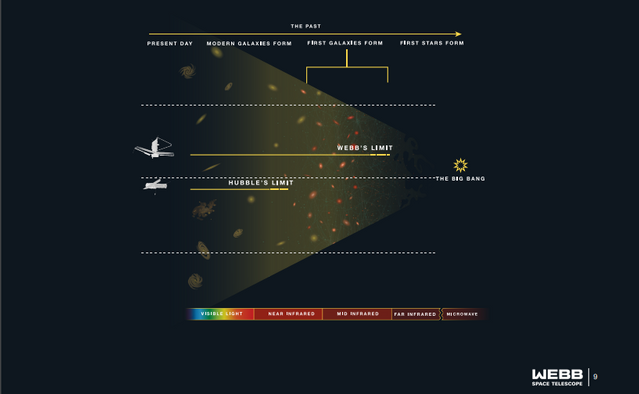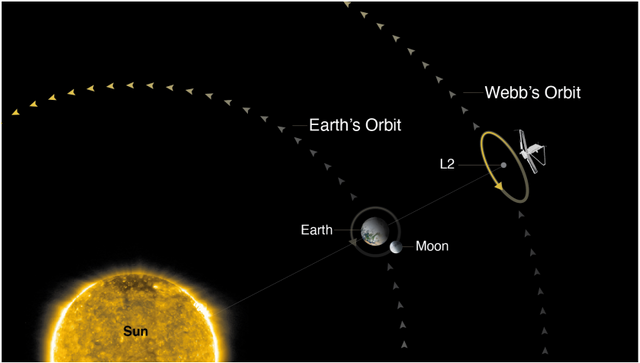The James Webb telescope, NASA's new infrared enabled telescope
As a predecessor to Hubble space telescope, James Webb space telescope has been touted as the most advanced telescope ever worked on by NASA, ESA and their partners in other space agencies and institutions around the world.
The powerful capabilities of James Webb will allow the telescope to be able to extract data from never before explored areas of our galaxy and other galaxies surrounding us. The infrared technology used in James Webb will potentially provide very concise answers to previously outlined questions that might shed more light on the origin and formation of life in our universe.

Image showing the capbilities of James Webb and its limits compared to those of predecessor Hubble
Source
Brief History
Named after James Webb, the top man at NASA from 1961 through all the years preceding the first moon landing in honour of his contributions towards space science.
The space telescope was initially named the Next Generation Space Telescope before getting a change of name in 2002.
The project has been in development for over 30 years with numerous professionals and scientists contributing to it. The idea to build the telescope came after the the director for STScI set up a challenge to build the next big thing after Hubble.
The JSTAC was formed to serve as an advisory committee on the project to help determine the areas in which James Webb will be an improvement to Hubble.

Image showing James Webb observatory
Source
Features of James Webb space telescope
James Webb possesses a number of unique capabilities that will enable it to provide deeper insights as opposed to earlier telescopes.
Among these unique features include
- Near infrared camreas from the university of Arizona which will be used to locate and detect specific activities of interest in the earliest stars and galaxies in our universe.
- Near infrared spectograph from the European space agency which will be used to disperse light into a spectrum in order to observe the bodies in that spectrum
- Mid infrared instrument by the European space agency will be used to provide imaging, cornography and internal field spectroscopy.
- Fine Guidance Sensor with Tunable Filter Module by the Canadian space agency which will be used to ensure accuracy of the information gotten from the observatory.

Image showing Webb's orbit compared to Earth's orbit
Source
Cost of James Webb space telescope
The James Webb telescope is said to have cost about 10 billion USD to build. Though, it was initially wrongly estimated to eat up cost of about 1 billion to 3.5 billion USD by analysts and project managers before the start of the project.
Launch date of the telescope
The telescope launched on the 25th of December 2021, and is presently located at a location about 1 million miles from earth' surface. You can easily find more updates about the current location and status of James Webb space telescope by visiting this link.
Final notes
Did you enjoy this piece about the James Webb space telescope, I'd love to know what you think. Kindly share your thoughts in the comments.
Dear @gotgame, we need your help!
The Hivebuzz proposal already got important support from the community. However, it lost its funding a few days ago and only needs a few more HP to get funded again.
May we ask you to support it so our team can continue its work this year?
You can do it on Peakd, ecency, Hive.blog or using HiveSigner.
https://peakd.com/me/proposals/199
Your support would be really helpful and you could make a difference.
Thank you!